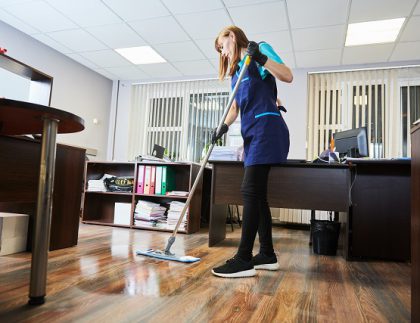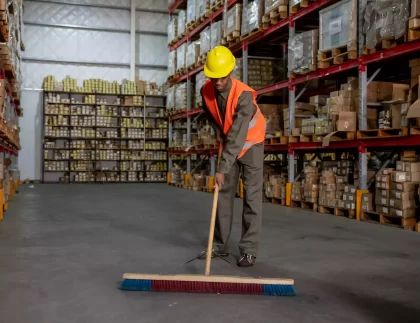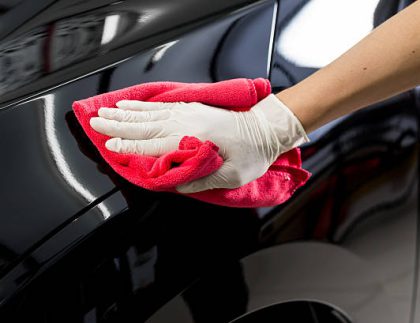
Global Market Potential
The Global Cleaning Services Market is anticipated to increase at a 7.80% CAGR during the forecast period, from an estimated $57.9 billion in 2020 to $92.69 billion by 2027. The floor care sector, which accounted for the largest share of the market in 2020 with $12,293.8 million, is anticipated to grow at a CAGR of 5.7% from 2020 to 2030 to reach $22,820.2 million. The U.S. Bureau of Labor projects that by 2023, there will be more than 236,500 new janitorial jobs in the country.
Market Growth Factors
High demand for cleaning services during the COVID-19
Since the global pandemic, there has been a sharp increase in demand for commercial cleaning services. In offices, hospitals, public buildings, retail establishments, and other public venues, cleaning services are frequently preferred by customers. The spread of COVID-19 from surfaces has made it imperative to completely sterilise every area. An filthy environment is less likely to draw customers and generate revenue for the firm. Since cleanliness always comes first, it is clear that the commercial cleaning industries are rapidly developing and gaining momentum.
Increase in disposable income and health awareness.
When using cleaning services, the source of revenue is quite important. The average person’s disposalable income has gone up recently all around the world. With this extra money, people’s lifestyles have also undergone a significant change. High wealth is frequently accompanied by a demanding lifestyle that leaves no time for cleaning, as well as a tight work schedule. People choose to outsource their cleaning tasks in these situations, which encourages the sector to grow even more.

What are the risk factors?
We frequently discuss how a customer’s experience is the most crucial aspect of any business, especially one that offers cleaning services. The importance of sanitation and cleanliness cannot be understated, especially since homes and workplaces should be welcoming locations where people may interact. Cleaning companies assist in sanitizing workplaces during flu season so that employees can report to work without getting sick. There is more at stake here than simply ensuring the reputation of your cleaning firm.
Working with green products is another essential element to ensuring the success of your enterprise. Despite the necessity of maintaining cleanliness, we must not overlook how crucial it is to do so sustainably by adopting eco-friendly cleaning supplies and techniques. Customers like services that use eco-friendly materials by 46%. In order to appeal to consumers who are becoming more environmentally concerned and to ensure that your staff members are fit and healthy while working, it is crucial to keep this green effort in mind.
Why Residential Cleaning?
The global market for residential cleaning, which was forecast to be worth US$5.6 billion in 2020 but is now expected to increase to US$10 billion by 2026 at a CAGR of 9.6%, notwithstanding the COVID-19 situation. The pandemic has made cleanliness more important than ever, which has caused the need for domestic cleaning services to rise dramatically. The situation is encouraging businesses to concentrate on diversity and sustainable solutions in addition to fostering the launch of cutting-edge products and specialized services. The business for household cleaning services appears to have bright and optimistic long-term growth prospects, despite the possibility of significant short-term headwinds from the healthcare and economic problems. In the US, the domestic cleaning market is anticipated to reach US$1.5 billion in 2021. Currently, the nation holds a 22.3% market share worldwide. Japan and Canada are two additional notable geographic markets, with growth rates of 7% and 7.6%, respectively, predicted for each over the course of the analysis. Over the past few decades, the US has seen an increase in the number of women working. Although the trend has led to increased income levels, the bulk of these families have little free time, which has allowed domestic housecleaning to grow quickly. The expanding middle-class population’s growing affluence is a major development factor in the emerging Asia-Pacific regions.

Why Commercial Cleaning?
Growing industrialization, the expansion of the manufacturing, healthcare, and other industries, as well as rising awareness of workplace hygiene and cleanliness, are the factors driving the growth of the global industrial cleaning market. Increased government rules concerning sanitation and industrial hygiene are another factor influencing industry expansion. Additionally, growing consumer awareness of infectious disorders brought on by bacteria and viruses combined with environmental cleaning to prevent infection fuels demand for cleaning products and chemicals, further boosting market expansion. In the United States, the cleaning services sector employs close to three million people as of May 2020. The majority of workers in this category were janitors and cleaners (excluding maids and housekeeping cleaners), who also had a mean annual income of 31,410 US dollars. Most janitors and cleaners work for the industry that provides services to homes and buildings, as well as in primary and secondary schools. The estimated revenue for cleaning services in the United States was 72.6 billion dollars.
According to estimates, the global industrial cleaning market will be worth USD 42.14 billion in 2021 and USD 55.47 billion in 2026, rising at a CAGR of 5.65%.

Why Steam Wash?
The size of the worldwide steam washer market is anticipated to increase significantly between 2020 and 2027. The primary force behind market growth is an increase in the demand for industrial parts. Other factors that will propel the market during the forecast period include rising consumer desire for improved cleanliness and higher standards of hygiene. The segment is divided into automotive, manufacturing, medical devices, pharmaceuticals, food & drinks, and others depending on application. The rising use of industrial parts in the manufacturing and automotive industries is one reason for the segment’s rise. The electric and fuel steam washer segments of the global market are separated based on power type. In terms of region, North America led the market in 2019 since there were advanced technologies and reputable manufacturers there. Global regional expansion is also being fueled by the rising use of automatic steam washers.
Steam car wash is right the future trend
In particular, the steam car wash market, the size of the car wash industry is continuing to grow at the same quick pace as the vehicle industry. The world market has suffered in recent years. The growth of steam car washes has had a significant and ongoing impact on the traditional car wash sector. The new car wash model of steam car wash will become a new development trend in the context of internationally supporting the “low-carbon energy-saving, green and environmentally-friendly” technological revolution.
Follow the market trend of energy-saving and environmental protection
The car is often sprayed with high-pressure water cannons in traditional car wash methods. Each car typically requires between 100 and 200 gallons of tap water. While foam residue and sewage flow can easily result in water loss and chemical contamination during the cleaning process, steam washing involves the water changing from a liquid condition to a gaseous form before being blasted onto the vehicle body at high pressure. As a result, the steam washing machine is sewage-free and environmentally benign, safeguarding the environment.
Suitable for a variety of application scenarios
The benefit of steam cleaning is that it does not pollute the environment. It applies to a variety of locations, including parking lots, petrol stations, commercial districts, and residential areas. The issue of high cost and time waste for the majority of customers can be resolved by its ability to function in a no-shop mode while simultaneously satisfying consumers’ needs for online reservations and door-to-door car wash services.
Able to operate at a low cost
Traditional car wash businesses require the renting of shops, the purchase of equipment, and decoration from an investment standpoint. With regard to this, there is no operational experience and the input cost is at least 200,000. Less capital is initially required to purchase steam washing equipment. It can be operated as long as only a small amount of water and electricity costs are spent throughout the operation process. This can be done after choosing the working location, negotiating cooperation with the appropriate department, and paying a portion of the costs. In addition, we may improve the service’s speed and usability by using marketing strategies like internet promotion. Furthermore, you’ll make more money.
The market for car washing solutions is the largest and most established in North America, with the United States accounting for more than 43% of global sales in 2018. In the area, more than 2 billion cars are washed annually.

The size of the global market for vehicle wash services is projected to grow at a CAGR of 3.8% from 2021 to 2028, reaching USD 44.73 billion (Business wire, 2021).











